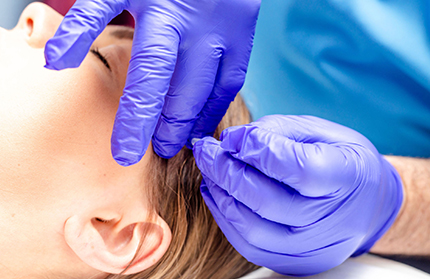In the U.S., June is declared as National Scoliosis Awareness Month. Scoliosis used to be a Greek word for bend or curve however, today it is used to describe one of the most common types of spinal curvature. With scoliosis, the spine bends sideways and rotates along its vertical axis resulting in physiological and cosmetic effects. In addition, the spine shows a degree of inward curvature in the lower back and shows a mild roundness in the upper back when viewed from the side and when viewed from the back or front, the spine appears curved.
Types and Causes of Scoliosis
Some of the most common types and causes of scoliosis include:
- Neuromuscular scoliosis: This is caused by abnormal nerves or muscles. It is more common in people with cerebral palsy or Bifida or people with conditions related to paralysis.
- Congenital scoliosis: This is as a result of bone abnormality during birth.
- Idiopathic scoliosis: This is the most common type of scoliosis. There is no specific identifiable cause of this type of scoliosis. However, there are strong pieces of evidence proving it is inherited.
- Degenerative scoliosis: This is caused by thinning of the bones (osteoporosis), previous major back surgery, or traumatic bone collapse.
Symptoms of Scoliosis
In children and teens, there are no obvious symptoms of scoliosis until the curve of the spine becomes severe or moderate. However, indicators include the child’s clothing not fitting properly, protruding ribs, or a crooked spine. For a child that has scoliosis: protrude
- One hip and/or shoulder may be higher than the other.
- The head will not be centered over the body.
- A side of the waistline may be flat
- When the child bends forward from the waist, the ribs are higher on one side
- A shoulder blade may stick out compared to the other.
In most cases, scoliosis does not cause pain in children or teens. However, adults suffering from scoliosis may experience back pain.
Overview of Scoliosis Treatment
Scoliosis treatment is aimed at stabilizing or correcting a severe spinal cord as well as preventing the spinal curve from getting worse.
- Nonstructural scoliosis (scoliosis caused by other conditions like muscle spasms) is improved when such condition is treated.
- Surgery is sometimes used to reduce the curve as well as stabilize the spine so the curve remains moderate.
- Nonsurgical treatment includes the use of a brace to prevent the spinal curve from getting worse as well as routine examinations by a physician to check for any curve progression. While children are usually checked in every 4 to 6 months, adults check are usually annually.
- To be sure that the curves are not getting worse, mild curves are regularly checked by a physician in every 4 to 6 months until the bones stop growing.
- Scoliosis treatment is based on the risk of progression, the size of the curve, and the age of the person. The risk of progression is based on the skeletal age (estimated with the Risser sign), the size of the curve (measured using X-ray), and the age at diagnosis.
- To prevent the curves from getting worse, moderate curves may need to be braced till the bones stop to grow.
- Worse moderate or severe curves may need surgery.
- No evidence has so far proved that spinal manipulation, electrical stimulation, or corrective exercises are an effective way of treating scoliosis.
Four-Stage Optional Scoliosis Treatment
- Stage I: Although not all scoliosis sufferers experience some sort of discomfort or pain, some do. The first stage is aimed at alleviating pain. This can be achieved using supportive postural taping, acupuncture, electrotherapy modalities, and release of tight muscles. Gentle exercises can also be introduced by a physiotherapist to maintain the spine’s mobility.
- Stage II: As pains leave, your physiotherapists try to optimize the flexibility and strength of the muscles, shoulder, and hip. This is done using taping techniques.
- Stage III: This stage aim at ensuring that normal daily activities are activated without symptoms reoccurrence. Physiotherapists tailor rehabilitation to ensure functionality of normal activities.
- Stage IV: This stage is aimed at preventing recurrence. Since scoliosis is mostly a permanent structural change in the skeleton, physiotherapists recommend some essential exercises that maintain postural support, flexibility, optimal strength, and core stability.

